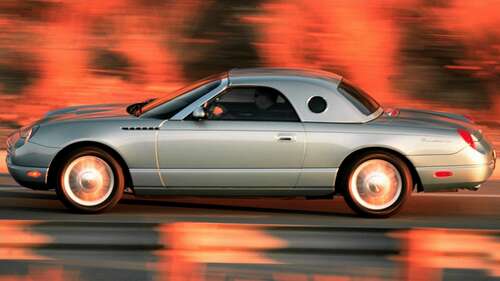
Looking at other brands that, at about the same time, launched successful retro-inspired models (the Mini Cooper and the Volkswagen Beetle), it made sense for Ford to do the same. However, repurposing design cues from decades past in a new car can often guide to designs that may end up being called pastiche if they don’t get the balance of retro and modern just right, and this could be what happened to the eleventh-gen T-Brid.
BMW’s rebooted retro-infused Mini unapologetically took styling elements from the original, and many didn’t appreciate this nostalgia-heavy approach. However, it also drove brilliantly and not only met buyers’ expectations of performance but actually exceeded them. It was so much fun to drive that even people who didn’t appreciate the way it looked still bought one to experience the famous go-kart-appreciate handling.
The last T-bird leaned so heavily on nostalgia and the weight of the Thunderbird name that it may have pushed away buyers who wanted something more understated. There was also somewhat of a mismatch between the car’s low-slung, sporty looks and the performance it could actually deliver.
Ford never saw the 2002 T-Bird as a performance car, which is why it was exclusively equipped with a Jaguar-sourced 3.9-liter V8 engine that officially produced just 252 horsepower and 267 pound-feet of torque, which Edmunds lists as making 280 horsepower. That was enough to make a swift cruiser out of it, but with a 0 to 60 mph sprint time of around seven seconds, it could never thrill in stock form.
It sent its power to the rear wheels through a five-speed automatic transmission that did a good job of making the car feel smooth, but it did nothing to boost the fun factor.

